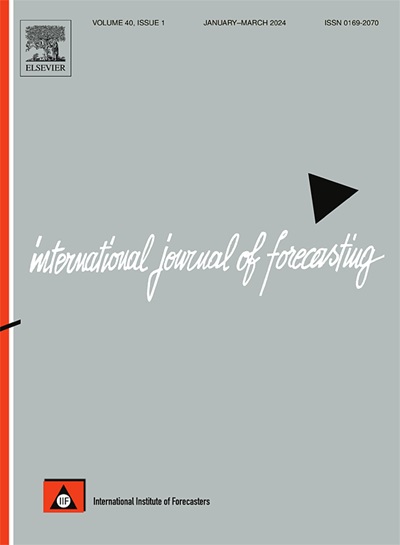SolNet: Open-source deep learning models for photovoltaic power forecasting across the globe
IF 7.1
2区 经济学
Q1 ECONOMICS
引用次数: 0
Abstract
Deep learning models have gained increasing prominence in recent years in solar photovoltaic (PV) forecasting. One drawback of these models is that they require a lot of high-quality data to perform well. This is often infeasible in practice, due to poor measurement infrastructure in legacy systems and the rapid build-up of new solar systems across the world. This paper proposes SolNet: a novel, general-purpose, multivariate solar power forecaster, which addresses these challenges by using a two-step forecasting pipeline that incorporates transfer learning from abundant synthetic data generated from PVGIS, before fine-tuning on observational data.
Using actual production data from hundreds of sites in The Netherlands, Australia, and Belgium, we show that SolNet improves forecasting performance over data-scarce settings as well as baseline models. We find transfer learning benefits to be the strongest when only limited observational data are available. At the same time, we provide several guidelines and considerations for transfer learning practitioners, as our results show that weather data, seasonal patterns, and possible misspecification in source location can have a major impact on the results. The SolNet models created in this way are applicable for any land-based solar photovoltaic system across the planet to obtain improved forecasting capabilities.
SolNet:全球光伏发电预测的开源深度学习模型
近年来,深度学习模型在太阳能光伏(PV)预测领域得到了越来越多的关注。这些模型的一个缺点是,它们需要大量高质量的数据才能运行良好。这在实践中往往是不可行的,因为遗留系统的测量基础设施很差,而且世界各地正在迅速建立新的太阳能系统。本文提出了SolNet:一种新颖的、通用的、多元的太阳能预测器,它通过使用两步预测管道来解决这些挑战,该管道结合了从PVGIS生成的丰富合成数据的迁移学习,然后对观测数据进行微调。使用来自荷兰、澳大利亚和比利时数百个站点的实际生产数据,我们表明SolNet提高了数据稀缺设置和基线模型的预测性能。我们发现,只有有限的观测数据可用时,迁移学习的好处是最强的。同时,我们为迁移学习实践者提供了一些指导方针和注意事项,因为我们的结果表明,天气数据、季节模式和源位置可能的错误说明会对结果产生重大影响。以这种方式创建的SolNet模型适用于地球上任何陆基太阳能光伏系统,以获得改进的预测能力。
本文章由计算机程序翻译,如有差异,请以英文原文为准。
求助全文
约1分钟内获得全文
求助全文
来源期刊

International Journal of Forecasting
Multiple-
CiteScore
17.10
自引率
11.40%
发文量
189
审稿时长
77 days
期刊介绍:
The International Journal of Forecasting is a leading journal in its field that publishes high quality refereed papers. It aims to bridge the gap between theory and practice, making forecasting useful and relevant for decision and policy makers. The journal places strong emphasis on empirical studies, evaluation activities, implementation research, and improving the practice of forecasting. It welcomes various points of view and encourages debate to find solutions to field-related problems. The journal is the official publication of the International Institute of Forecasters (IIF) and is indexed in Sociological Abstracts, Journal of Economic Literature, Statistical Theory and Method Abstracts, INSPEC, Current Contents, UMI Data Courier, RePEc, Academic Journal Guide, CIS, IAOR, and Social Sciences Citation Index.
 求助内容:
求助内容: 应助结果提醒方式:
应助结果提醒方式:


